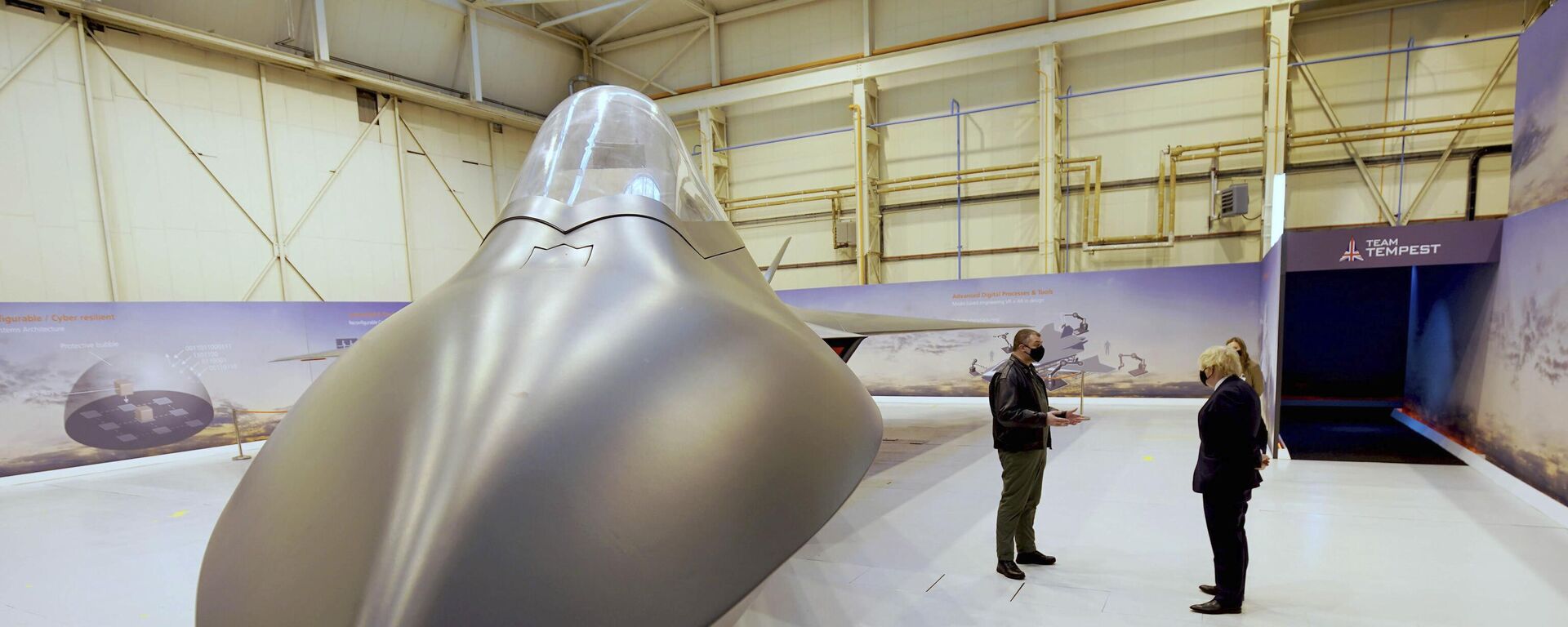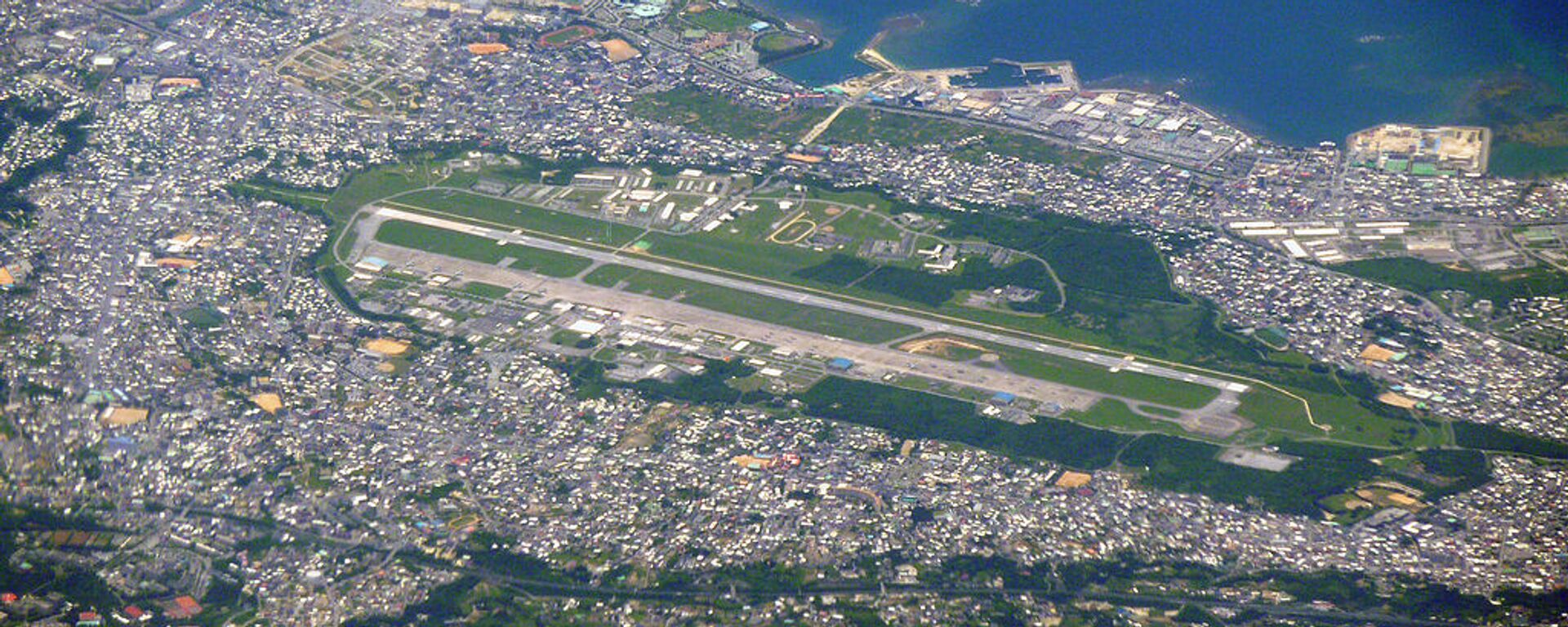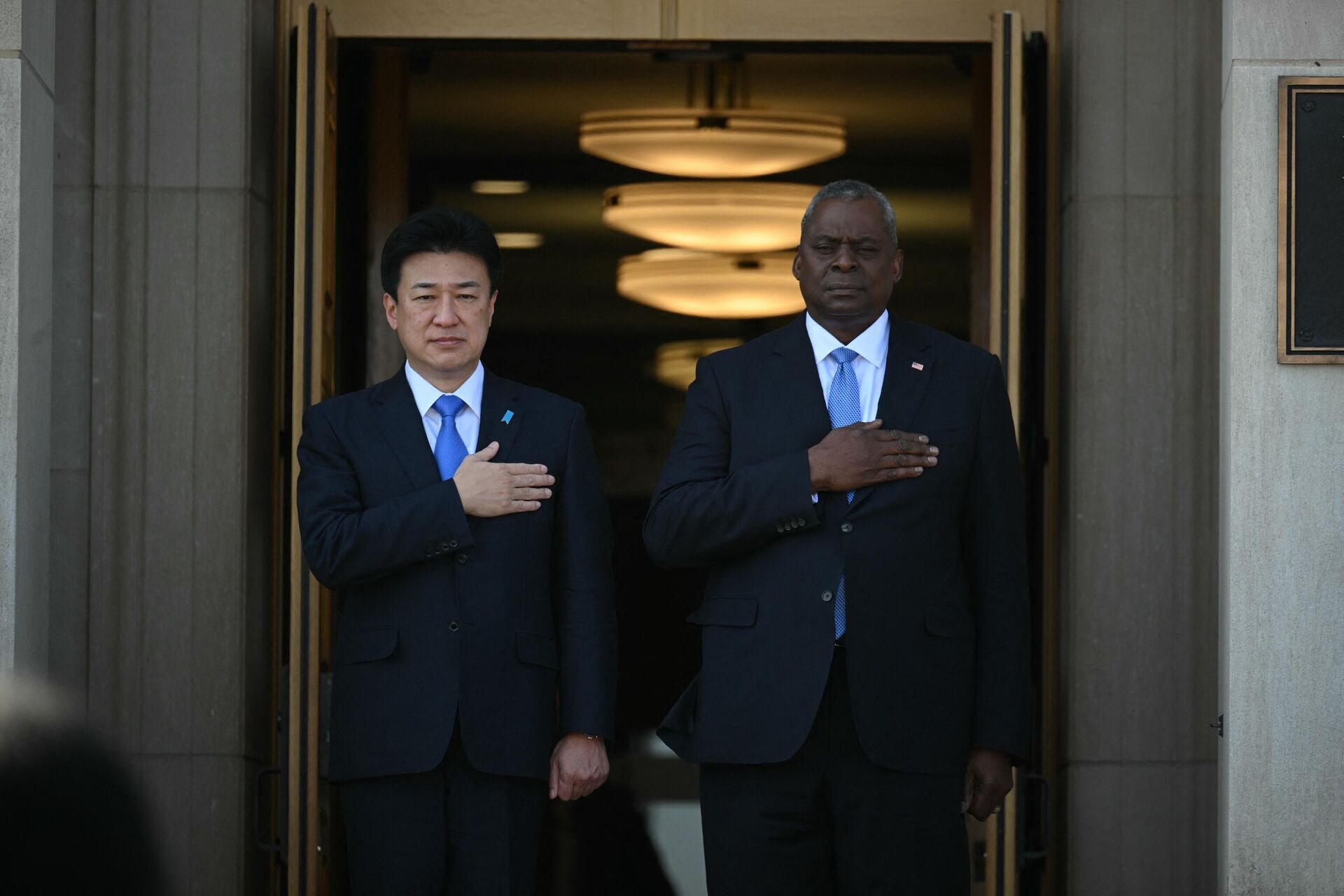https://sputnikglobe.com/20231005/japan-reportedly-fast-tracking-purchase-of-us-tomahawk-missiles-amid-military-buildup--1113944799.html
Japan Reportedly Fast-Tracking Purchase of US Tomahawk Missiles As It Boosts Military Reserves
Japan Reportedly Fast-Tracking Purchase of US Tomahawk Missiles As It Boosts Military Reserves
Sputnik International
As part of its ongoing military buildup, Japan is speeding up plans to acquire Tomahawk cruise missiles from the US, according to a local media report.
2023-10-05T12:07+0000
2023-10-05T12:07+0000
2023-10-05T13:05+0000
world
japan
us
tomahawk
fumio kishida
joe biden
wang wenbin
raytheon
china
north korea
https://cdn1.img.sputnikglobe.com/img/07e7/0a/05/1113944404_0:135:1271:850_1920x0_80_0_0_25f9ffb0ed636c724d9fe7803a543462.jpg
As part of its ongoing military build-up rationalized by US-fueled claims of being threatened by neighboring countries, Japan is speeding up plans to buy Tomahawk cruise missiles from the US, according to a local media report.During a visit to the US, Japan’s Defense Minister Minoru Kihara met with US Secretary of Defense Lloyd Austin and said that the two countries “shared the recognition” to buy Tomahawk missiles in the fiscal year starting in April 2025. Initially, Japan had earmarked more than ¥200 billion ($1.3 billion) to buy 400 Tomahawk Block-5 cruise missiles made by Raytheon Technologies Corp in 2026 and 2027, and then to install them on the country's destroyers, the report said. However, now the revised plan outlines buying only 200 Tomahawk Block-4 missiles, which could bring the costs down, according to an unnamed official. US Congress needs to give its approval to the transaction.Capable of being fired from ships and submarines, the sub-sonic Tomahawk cruise missiles boast a range of about 1,000 miles (1,600 kilometers), according to Raytheon. Work to upgrade the missiles to the new Block-5 generation has been underway in the US since 2020, with the US Navy focusing on advancing the communication and navigation systems.During the Pentagon meeting on 4 October, the US Defense Secretary reaffirmed Washington’s “ironclad” commitment to the defense of all Japan under Article V of the Japan-US Security Treaty. Kihara and Austin agreed to strengthen the capabilities of the alliance “including effective operation of counterstrike capabilities under Japan-US cooperation,” according to a joint statement.Japan's Military Beef-UpThe plans to buy Tomahawk cruise missiles from the US come as part of the overall drive by Japan to beef up its military, echoing the same "threat" allegations that Washington typically conjures up. As Japan bolsters its rapprochement with NATO, it repeatedly claims that boosted defense is needed to ostensibly "deter" China, the Democratic People's Republic of Korea (DPRK), and, possibly, Russia. In December 2022, Japanese Prime Minister Fumio Kishida’s government approved three policy documents - the National Security Strategy (NSS), the National Defense Strategy and the Defense Buildup Program – which envisaged doubling the nation's defense spending within the next five years. For fiscal year 2024, Japan's Defense Ministry has requested the largest defense budget in its history, worth a whopping $53 billion, 12 percent higher than in 2023.On 28 July, Japan released the 2023 Defense White Paper, warning about the "advent of a new crisis era". Article 9 of Japan's war-denouncing Constitution prohibits offensive actions by the nation's military. A succession of Liberal Democratic Party governments - including the present one led by Kishida - have sought to re-write that charter to loosen the restrictions on arms exports, allow overseas deployments in support of US-led military interventions, etc. in January 2023, Western media suggested that Japan was gradually "scrapping" its post-WW2 pacifist defense strategy. Furthermore, the ongoing military build-up in Japan comes as the US beefs up its military presence in the Asia Pacific along with the UK and Australia within the framework of the tripartite AUKUS alliance. The United States has also boosted trilateral security cooperation with Japan and South Korea. After US President Joe Biden, Japanese Prime Minister Kishida and South Korean President Yoon Suk-yeol met at the Camp David presidential retreat on 18 August, Moscow said that the flurry of political and military interaction promotes Washington's policy on deterring Moscow. The summit's agreements are "of confrontational nature" aimed at an escalating situation in the Asia-Pacific under the pretext of "response to global challenges and threats", said the Russian Foreign Ministry.Japan's foreign policy and its modern militarization are “to a large degree driven by American interests”, experts have told Sputnik. Pundits added that US geopolitical objectives "directly threaten peace, stability, and thus prosperity in the region.”China has also voiced opposition to certain countries uniting in exclusionary groups in the region. "China opposes relevant countries assembling exclusionary groupings, and practices that intensify antagonism and undermine the strategic security of other countries," Chinese Foreign Ministry spokesman Wang Wenbin said.North Korea has also weighed in on Japan's claims of having been threatened by neighboring countries, with DPRK's media slamming it as a "smokescreen" to justify Tokyo's intention to swell into a major military power.
https://sputnikglobe.com/20230921/will-west-draw-japan-into-militarization-with-uk-italy-6th-gen-fighter-project-1113552937.html
https://sputnikglobe.com/20230913/us-deployments-in-japan-could-chain-gang-tokyo-into-conflict-with-china-1113350821.html
japan
china
north korea
Sputnik International
feedback@sputniknews.com
+74956456601
MIA „Rossiya Segodnya“
2023
News
en_EN
Sputnik International
feedback@sputniknews.com
+74956456601
MIA „Rossiya Segodnya“
Sputnik International
feedback@sputniknews.com
+74956456601
MIA „Rossiya Segodnya“
japanese constitutional ban on militarisation, gcap 6th generation fighter project, japan nato us military cooperation, japan military buildup, japan defense buildup program, japanese military budget, japanese pacifist constitution,
japanese constitutional ban on militarisation, gcap 6th generation fighter project, japan nato us military cooperation, japan military buildup, japan defense buildup program, japanese military budget, japanese pacifist constitution,
Japan Reportedly Fast-Tracking Purchase of US Tomahawk Missiles As It Boosts Military Reserves
12:07 GMT 05.10.2023 (Updated: 13:05 GMT 05.10.2023) Despite Japan being constitutionally opposed to war, with an official pledge that its armed forces' role should be purely one of self-defense, Tokyo, under Western influence, has been on a military spending spree of late, with Prime Minister Fumio Kishida vowing to boost defense spending by about 60 percent over the next five years.
As part of its ongoing
military build-up rationalized by US-fueled claims of being threatened by neighboring countries, Japan is speeding up plans to buy
Tomahawk cruise missiles from the US, according to a local media report.
During a visit to the US, Japan’s Defense Minister Minoru Kihara met with US Secretary of Defense Lloyd Austin and said that the two countries “shared the recognition” to buy Tomahawk missiles in the fiscal year starting in April 2025.
Initially, Japan had earmarked more than ¥200 billion ($1.3 billion) to buy 400 Tomahawk Block-5 cruise missiles made by Raytheon Technologies Corp in 2026 and 2027, and then to install them on the country's destroyers, the report said. However, now the revised plan outlines buying only 200 Tomahawk Block-4 missiles, which could bring the costs down, according to an unnamed official. US Congress needs to give its approval to the transaction.
Capable of being fired from ships and submarines, the sub-sonic Tomahawk cruise missiles boast a range of about 1,000 miles (1,600 kilometers), according to Raytheon. Work to upgrade the missiles to the new Block-5 generation has been underway in the US since 2020, with the US Navy focusing on advancing the communication and navigation systems.
During the Pentagon meeting on 4 October, the US Defense Secretary reaffirmed Washington’s “ironclad” commitment to the defense of all Japan under Article V of the Japan-US Security Treaty. Kihara and Austin agreed to strengthen the capabilities of the alliance “including effective operation of counterstrike capabilities under Japan-US cooperation,” according to a joint statement.
"This is a time of historic momentum in the US-Japan alliance. We support your government's bold decisions to invest in advanced capabilities including counterstrike, and to increase defense spending to 2 percent of Japan's gross domestic product by 2027," stated Austin.

21 September 2023, 15:25 GMT
The plans to buy
Tomahawk cruise missiles from the US come as part of the overall drive by Japan to beef up its military, echoing the same "threat" allegations that Washington typically conjures up. As Japan bolsters its rapprochement with NATO, it repeatedly claims that boosted defense is needed to ostensibly
"deter" China, the Democratic People's Republic of Korea (DPRK), and, possibly, Russia.
In December 2022, Japanese Prime Minister Fumio Kishida’s government approved three policy documents - the
National Security Strategy (NSS), the
National Defense Strategy and the
Defense Buildup Program – which envisaged doubling the nation's
defense spending within the next five years. For fiscal year 2024, Japan's Defense Ministry has requested the largest
defense budget in its history, worth a whopping
$53 billion, 12 percent higher than in 2023.
On 28 July, Japan released the 2023 Defense White Paper, warning about the "advent of a new crisis era".
Article 9 of Japan's war-denouncing Constitution prohibits offensive actions by the nation's military. A succession of Liberal Democratic Party governments - including the present one led by Kishida - have sought to
re-write that charter to loosen the restrictions on arms exports, allow overseas deployments in support of US-led military interventions, etc. in January 2023, Western media suggested that Japan was gradually "scrapping" its post-WW2 pacifist defense strategy. Furthermore, the ongoing
military build-up in Japan comes as the US beefs up its military presence in the Asia Pacific along with the UK and Australia within the framework of the tripartite
AUKUS alliance.
The United States has also boosted trilateral security cooperation with Japan and South Korea. After US President Joe Biden, Japanese Prime Minister Kishida and South Korean President Yoon Suk-yeol met at the Camp David presidential retreat on 18 August, Moscow said that the flurry of political and military interaction promotes Washington's policy on deterring Moscow. The summit's agreements are "of confrontational nature" aimed at an escalating situation in the Asia-Pacific under the pretext of "response to global challenges and threats", said the Russian Foreign Ministry.
Japan's
foreign policy and its modern militarization are “to a large degree driven by American interests”,
experts have told Sputnik. Pundits added that US geopolitical objectives "directly threaten peace, stability, and thus prosperity in the region.”
China has also
voiced opposition to certain countries uniting in exclusionary groups in the region. "China opposes relevant countries assembling exclusionary groupings, and practices that
intensify antagonism and undermine the strategic security of other countries," Chinese Foreign Ministry spokesman Wang Wenbin said.
North Korea has also weighed in on Japan's claims of having been threatened by neighboring countries, with DPRK's media slamming it as a "smokescreen" to justify Tokyo's intention to swell into a major military power.

13 September 2023, 17:17 GMT






